We still don’t know how fast the Universe is expanding
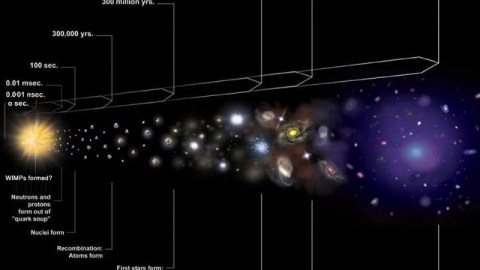
Nearly 100 years after Hubble first showed us the Universe is expanding, we still don’t know its rate.
“In the far, far future, essentially all matter will have returned to energy. But because of the enormous expansion of space, this energy will be spread so thinly that it will hardly ever convert back to even the lightest particles of matter. Instead, a faint mist of light will fall for eternity through an ever colder and quieter cosmos.” –Brian Greene
Once we discovered that the Universe was expanding, the next scientific step was to determine what the rate of expansion was. Despite the fact that it’s been more than 80 years, we still don’t have agreement on how fast that rate actually is. By looking at the largest cosmic scales and the oldest signals — the leftover radiation from the Big Bang and the largest-scale galaxy correlations — we get one number for the rate: 67 km/s/Mpc. But if we look at individual stars, galaxies, supernovae and other direct indicators, we get another number: 74 km/s/Mpc. The uncertainties are very small: ±1 on the first number and ±2 on the second; statistically, there’s less than a 0.1% chance these numbers will reconcile with one another. This is a controversy that should finally be resolved in the next 5 years, but has been ongoing since the expanding Universe was first discovered.
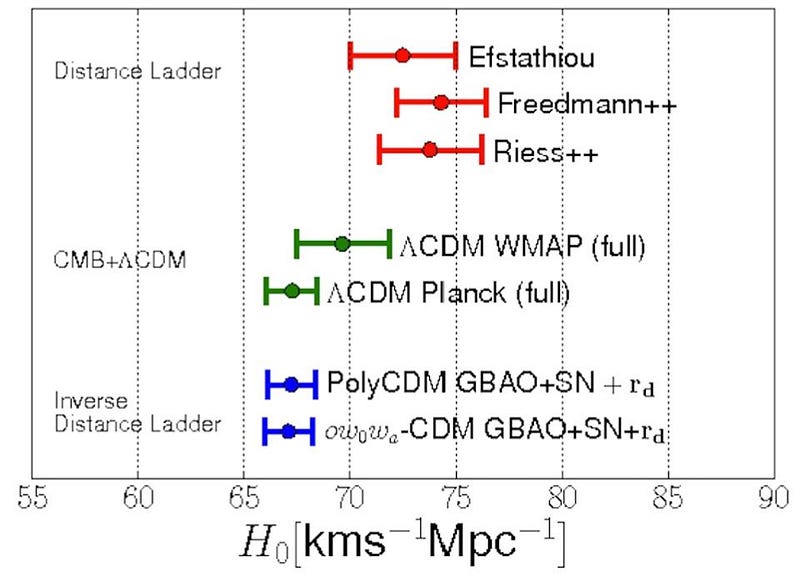
“Cosmological implications of baryon acoustic oscillation measurements”, Aubourg, Éric et al. Phys.Rev. D92 (2015) no.12, 123516.
In 1923, Edwin Hubble was using the world’s largest telescope to look for novae in other galaxies. I shouldn’t say “galaxies” just yet, because humanity wasn’t yet certain what those spirals in the sky were. While looking at the largest one — M31, now known as the Andromeda galaxy — he saw first one, then a second, then a third nova. But when the fourth one came, it would change everything. It occurred in the exact same location as the first, which was an impossibility, since novae takes centuries or more to recharge, yet this one had recurred in less than a week. Excitedly, Hubble crossed out the first “N” he wrote and replaced it, in red, with “VAR!” He realized it was a variable star, and since the physics of that particular class of variable star was known, he could calculate the distance to Andromeda. He showed it was well outside of the Milky Way, making it a galaxy unto itself. It was the greatest observation of a single star in astronomical history.
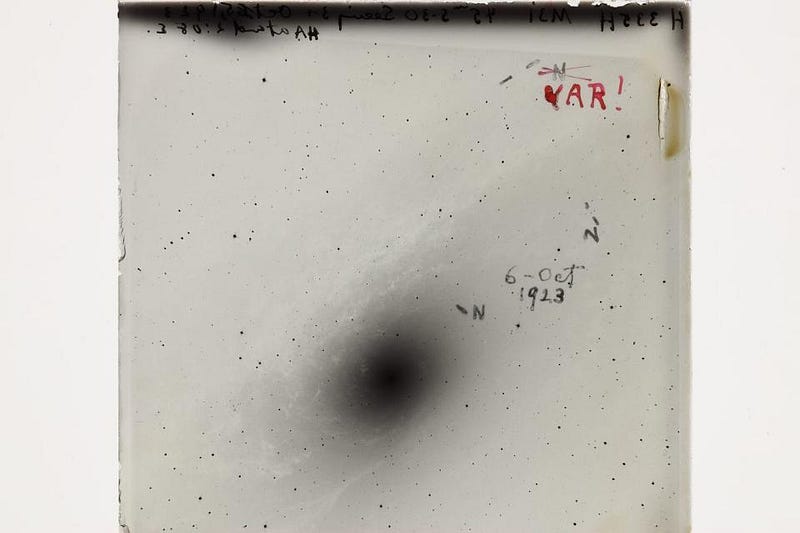
Hubble continued his work, observing variable stars in many spiral galaxies. Along with their shifted spectral lines, he began to note that the farther away a galaxy was, the faster it was receding from us. He not only discovered this law — now known as Hubble’s Law — he was the first to measure the expansion rate: the Hubble parameter. The number he got, though, was high. Ridiculously high. So high, that if it were correct, it would mean that the Big Bang had occurred only two billion years ago. That presented a difficulty, considering that geological evidence tells us that Earth is over four billion years old!
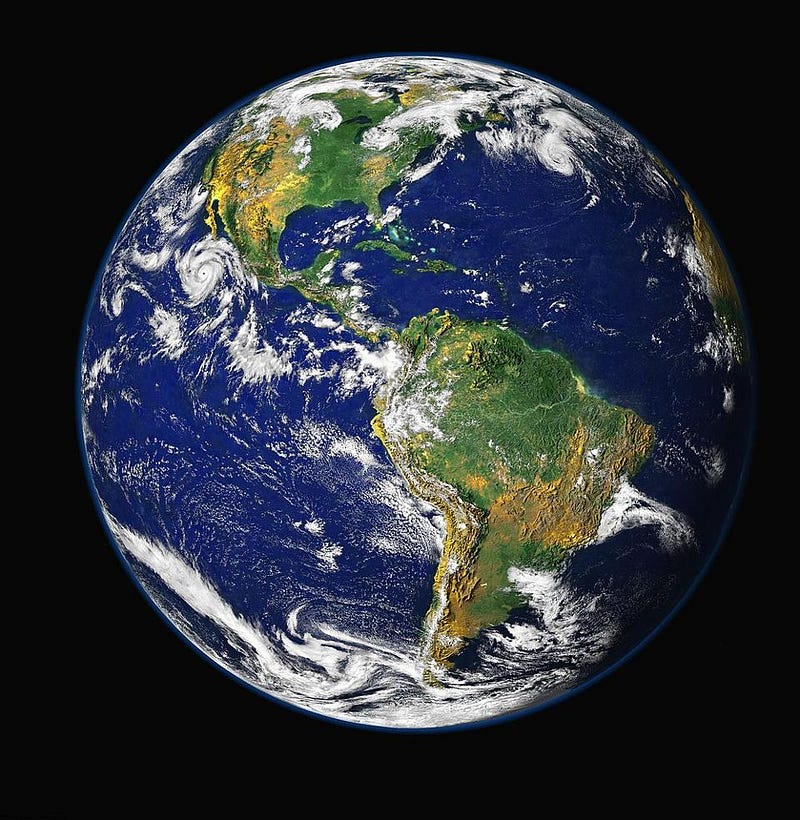
In 1943, astronomer Walter Baade was carefully observing variable stars outside of the Milky Way, when he noticed something incredibly important: not all of the Cepheid Variables — the type Hubble used to determine the Universe’s expansion — behaved in the same fashion. There were two different classes of them, instead, and all of a sudden this meant that the Hubble constant wasn’t nearly as large as Hubble had concluded.
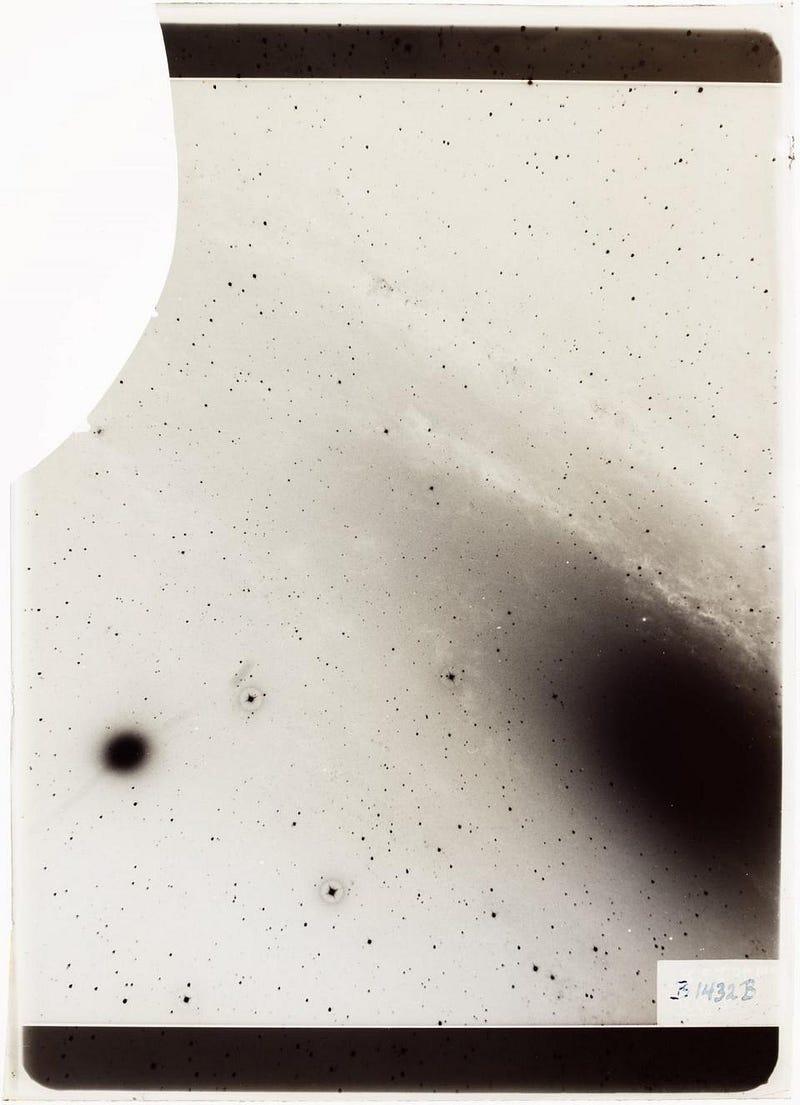
Instead, the Universe was expanding more slowly, meaning it took more time for the Universe to reach its current size. For the first time, the Universe was estimated to be older than the Earth, and this was a good thing. Over time, further refinements ensued, the Hubble rate continued to drop, and the Universe’s age continued to rise. Eventually, even the oldest stars of all could be accounted for by the age of the Universe.
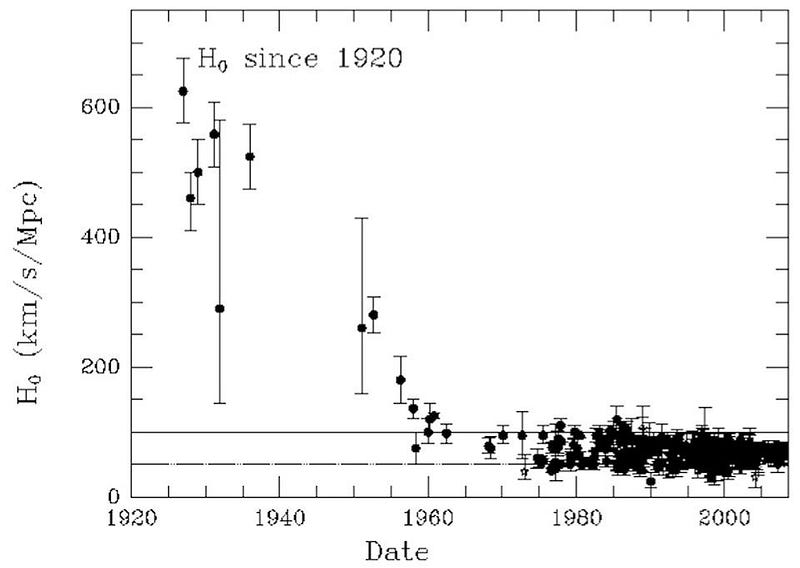
But the story doesn’t end there. Did you ever wonder why the Hubble Space Telescope was given that name? It isn’t because it was named after Edwin Hubble, the man who discovered that the Universe was expanding, but rather because its primary mission was to measure the Hubble parameter, or the rate at which the Universe was expanding. Prior to the telescope’s launch in 1990, there were two camps advocating for a vastly different Universe: one led by Allan Sandage, for a Universe with an expansion rate of 50 km/s/Mpc and an age of 16 billion years; one led by Gerard de Vaucouleurs, for a Universe with an expansion rate of 100 km/s/Mpc and an age closer to 10 billion years. The two camps were each convinced the other was making a systematic mistake in their measurements, and there was no middle ground. The main science goal of the Hubble Space Telescope — the key project — was to measure this rate once and for all.
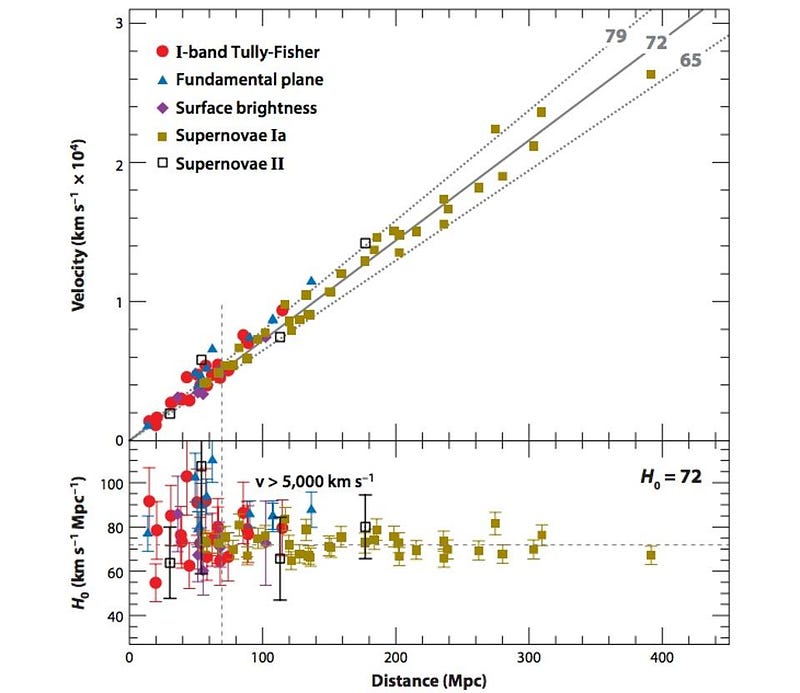
And it did: 72 ± 8 km/s/Mpc, were the project’s final results. Both camps were wrong. Today, those errors are even smaller, and the tensions that exist are between two different methods. If you look at the entire Universe on the largest scales, both at the fluctuations in the cosmic microwave background and at the baryon acoustic oscillations revealed by galaxy clustering, you get the lower figure: 67 km/s/Mpc. But there is a fair bit of wiggle room as far as what’s allowed; it’s not the most favored result, but higher values are very much allowed.
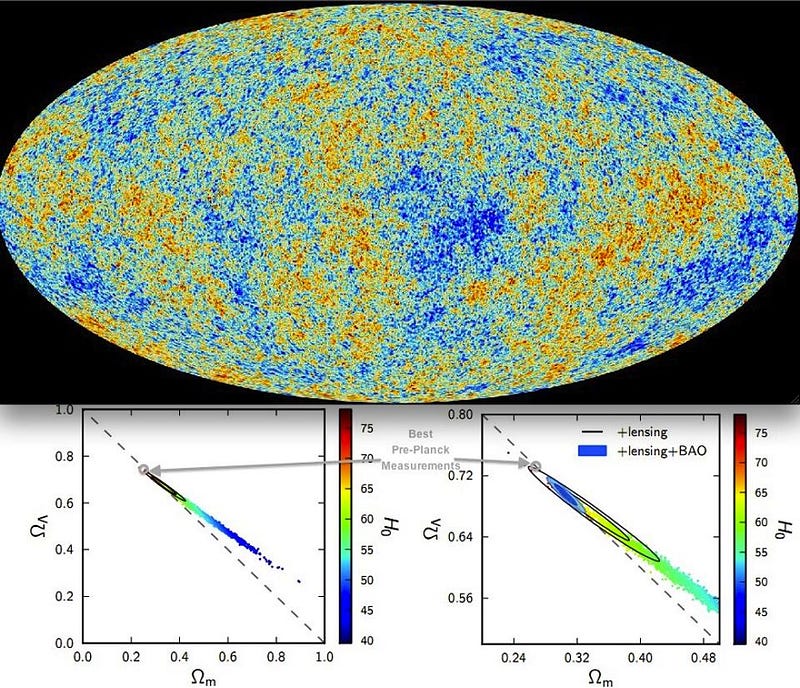
If you look at direct measurements of individual stars within our own galaxy and then those same classes of stars in other galaxies, and then supernovae beyond that, you get that larger value: 74 km/s/Mpc. But a systematic error in the measurements of the closer stars, even an error of only a few percent, could lower that number tremendously, even to being in agreement with the lower figures. As the ESA’s Gaia mission continues to make parallax measurements to unprecedented accuracy of a billion stars within our galaxy, this tension may wind up resolving itself.
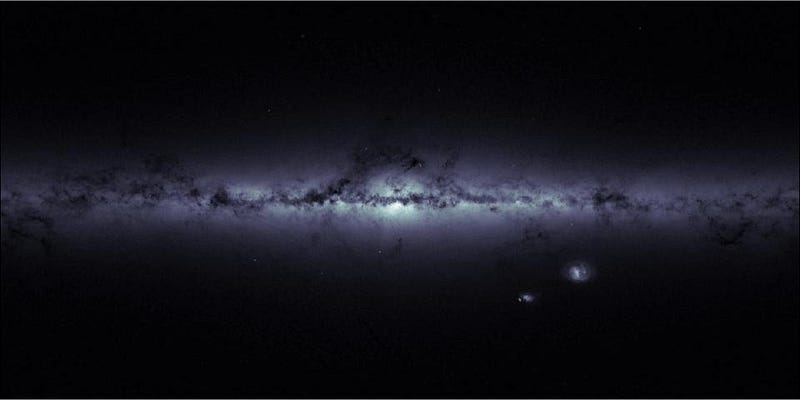
As it stands today, we know the Hubble expansion rate better than we ever have, and yet our two different method of arriving at it seem to give irreconcilable values. There are a myriad of different measurements going on right now attempting to find out which camp is right, which camp is wrong, and exactly where the errors lie. If history has taught us anything, we can say for certain that two things will come of this: we’re going to learn something additional and wonderful about the nature of our Universe when this gets resolved, and that this current controversy won’t be the last one concerning how the Universe expands.
Thanks to Carnegie Observatories for generous permission to use their classic plates, taken by Edwin Hubble and Walter Baade, respectively. Follow them on Twitter at @CarnegieAstro.
This post first appeared at Forbes, and is brought to you ad-free by our Patreon supporters. Comment on our forum, & buy our first book: Beyond The Galaxy!





